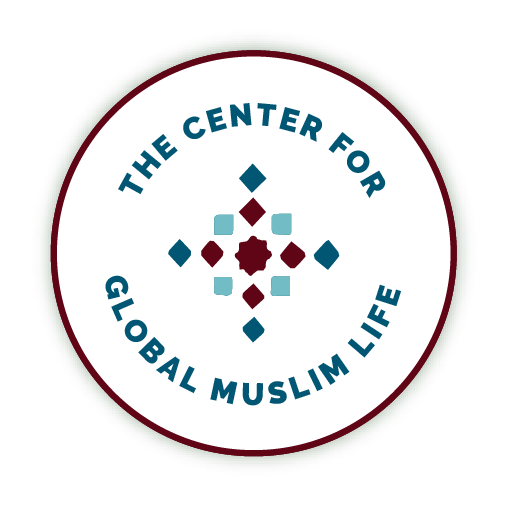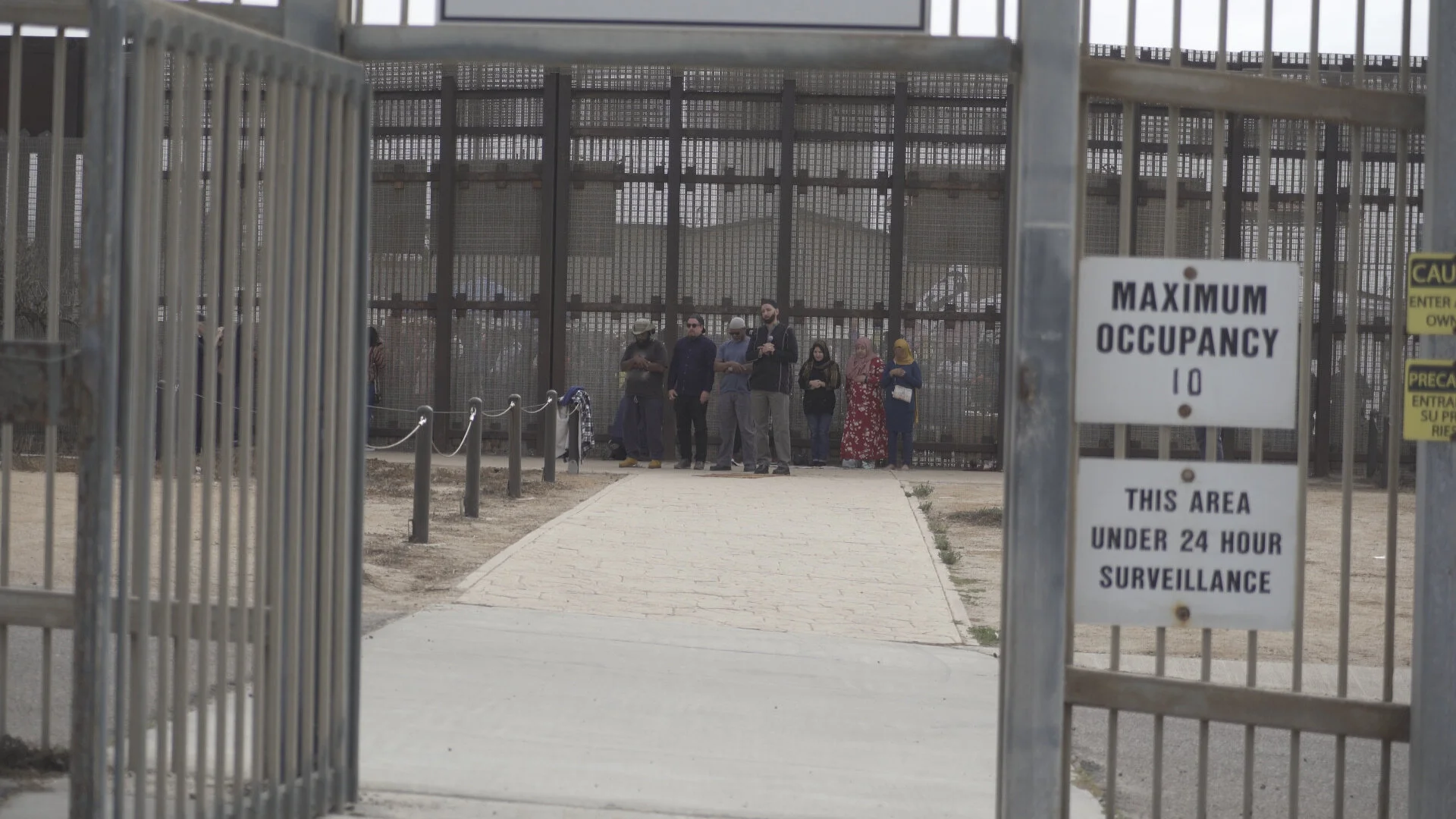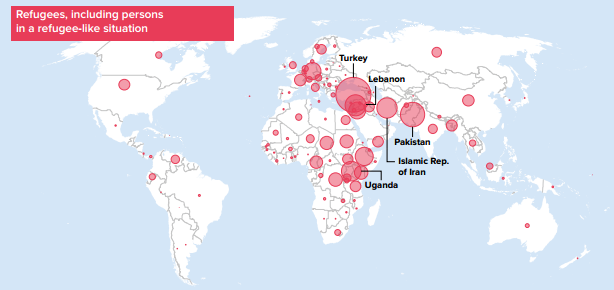Pray Beyond Borders Feature Film
Imam Omar Sulieman leads the Border Mosque community on the US & Mexican side of the border fence in the mid-day prayer. Imam Omar is leading a small group of Muslims in this photo on the US side of the border, within the secondary border of Friendship Park. You can see through the fence more than one hundred Muslims following in prayer. This still is taken from the feature-length documentary, Pray Beyond Borders. Footage courtesy of Diego Lynch
An aerial drone still crossing into the United States from Mexico from the short film, “A Prayer Beyond Borders”
Starting in 2019, we built the Border Mosque at one of the most militarized borders in the world, to unite separated families and to raise our voices as Muslims against the inhumane immigration system in the United States.
Over the last four years as Friendship Park at the US/ Mexico border has been closed, we imagined what the Border Mosque would look like as a virtual space where Muslim refugees from around the world can come together for spiritual uplift, but also to get connected to key resources for wherever it is they are traveling in the world.
This is how the Global Border Mosque was born with refugee leaders from the Border Mosque who want to give back and serve, just as our families were given shelter, and food, information, and legal help every step of the way in their journey for safety, and to build new homes.
The Global Border Mosque is a necessary gathering space, to create belonging for Muslim refugees who face Islamophobia all over the world. Today Muslims make up the majority of the world’s refugee population, with 46% of global refugees coming from Muslim majority countries. This doesn’t even take into account the Latino Muslim convert populations we met on the Border, escaping war and violence just like Muslims from other parts of the world.
Our call to pray beyond borders started with a humble gathering in Friendship Park on the US/ Mexico border of San Diego and Tijuana in April of 2019. A group of Muslims and Christians gathered to pray together in parallel ceremonies on each side of one of the world's most militarized international borders. The sea met below us, just past the reach of the fence, as did our hearts connected by a love for God and a deep desire to transform the humanitarian crisis that surrounds us.
It was at that border that we prayed together for almost a year, we even brought Congresswoman Rashida Tlaib to our ceremony in December of 2019. Our groups started talking about traveling to Palestine together, and then suddenly, our final ceremony of the Border Church & Border Mosque came at the end of February 2020. As we know the world changed around us overnight, but Friendship Park has stayed closed this entire time, and because of water sanitation issues in the park, we doubt this binational space of gathering and prayer will open again any time soon.
In that space, we met friends from around the world, many who had been separated from their families and were seeking asylum in the United States. We met refugees from all over, but we also met Muslim ban refugees stuck in Tijuana.
In the year that we have been unable to meet at Friendship Park, we worked with directly impacted Muslim refugees to imagine what the future of the Border Mosque would look like. We met together online, we prayed together with our friends at the Border Church, and we began to work with partners doing important work beyond the space where the Border Mosque was launched. We worked with our partners at Beliver’s Bailout to raise money to get people free from immigration detention centers. We took calls from families who had brothers, and sisters, and cousins, and aunts, and uncles locked up in the midst of COVID at detention centers for more than six months at a time.
Building the Border Mosque - 2019-2020
Building the Border Mosque
To break down barriers we have to first start with the borders in our minds and hearts, and the borders within our communities and families. If we break down the walls between us then no iron or steel can stop our hearts from being connected. Prayer is not confined to dimensions of existence, let alone man-made borders, so answer this call and pray with us.
From this original gathering we believe we have opened up one of the most important Christian / Muslim relationships in the world. While we have invited in other faith groups and we pray that others join us in this call, the core groups have been Muslim and Christian leaders. Together our faith communities make up more than 50% of humanity as the two largest religious groups on this earth. We know of no other place on this earth where Muslim and Christian services take place together, we invite you to join us and connect with our friends and family in the Border Church and Border Mosque.
THE SHORT FILM - A PRAYER BEYOND BORDERS
At our first Border Mosque/ Border Church service we commissioned a binational film crew with 15 members to shoot the service on both sides of the border with a team also crossing with the Muslim community into Tijuana. The direction from the filmmaker’s Ala’ Khan & Reynaldo Escoto was clear in attempting to capture the “God’s eye view” of the Border where no barrier exists. We did this through film-making focused on the spiritual nature of the service through close-up shots of the participants, and the contrasts on both sides of the border with central drone shots that allowed the camera to pass over the border.
This turned into our film, “A Prayer Beyond Borders” which screened at international film festivals, and at the border wall in Tijuana and was distributed by MoveOn, and MPower Change. The film produces critical narrative interventions by featuring authentic Muslim and Christian voices in unison focused on justice and the immigration issues at the border, while also featuring Latina Muslims throughout the film.
With the six-month anniversary of Border Mosque services we also conducted our first truly binational prayer with Imam Omar Suleiman leading the prayer in the US while a large group of Muslims followed in Mexico on the other side of the border wall.
From Palestine to Mexico
In December of 2019, Congresswoman Rashida Tlaib visited the Border Mosque in what become one of our most emotional ceremonies as she reflected on being separated from her family in Palestine like people at the Border wall have been separated from their families. We produced a short film of her visit, “From Palestine to Mexico.”




